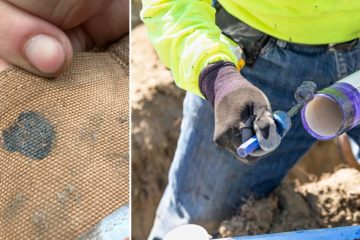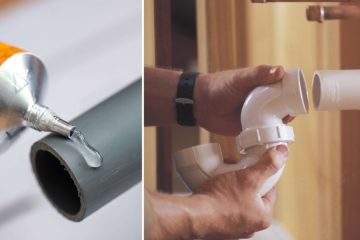Dealing with sticky spray adhesive residue on wood surfaces can be a real pain. It’s unsightly, and if not removed properly, it can compromise the wood’s natural beauty and integrity. Fear not, fellow woodworkers and DIYers! This comprehensive guide will equip you with the knowledge and techniques to efficiently and safely how to remove spray adhesive from wood from various types of wood.
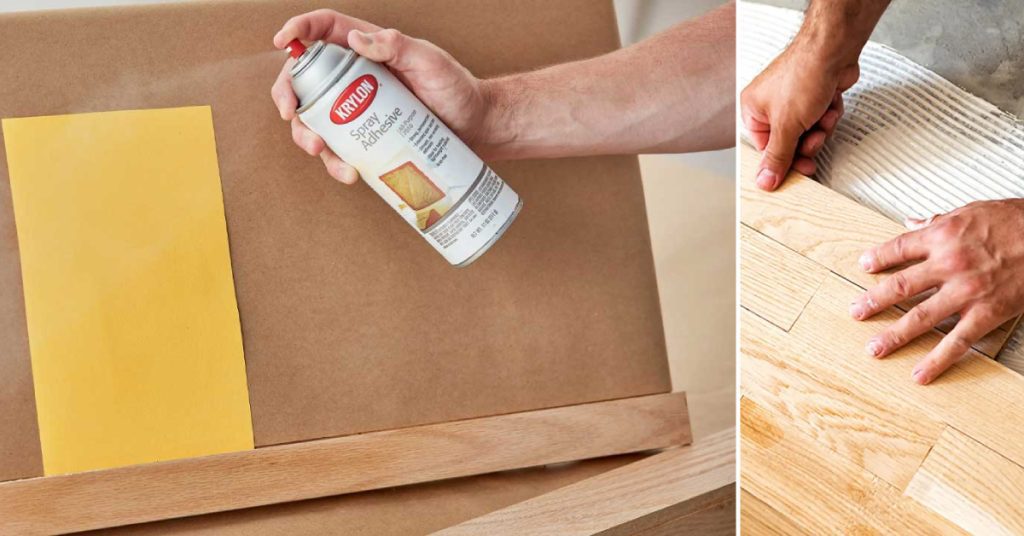
Key Takeaways:
- Gather proper supplies and set up a well-ventilated workspace.
- Follow a step-by-step approach: scraping, heat application, solvent application, and wiping.
- Consider specialized techniques for unique challenges and homemade solvent alternatives.
- Take preventive measures to avoid future messes.
Understanding the Enemy: Spray Adhesives
Spray adhesives are a convenient choice for woodworking projects, crafts, and more, thanks to their strong bonding capabilities. However, this strength also makes the residue incredibly difficult to remove. These adhesives create a long-lasting, moisture-resistant bond that stubbornly clings to wood surfaces.
Improper removal techniques can lead to disastrous results, like wood discoloration, scratches, or even structural damage. That’s why it’s crucial to approach this task with the right preparation and methods.
Gearing Up: Preparing for Adhesive Removal
Before you dive into the removal process, gather the necessary supplies. You’ll need solvents (like isopropyl alcohol, white vinegar, or citrus cleaners), scraping tools (plastic putty knives or old credit cards), protective gear (gloves, goggles, respirator mask), absorbent rags, and compatible wood finish (for touch-ups).
Next, set up a well-ventilated workspace. Proper ventilation is essential when working with solvents to ensure your safety. Finally, test any solvents on an inconspicuous area of the wood first, just to be safe.
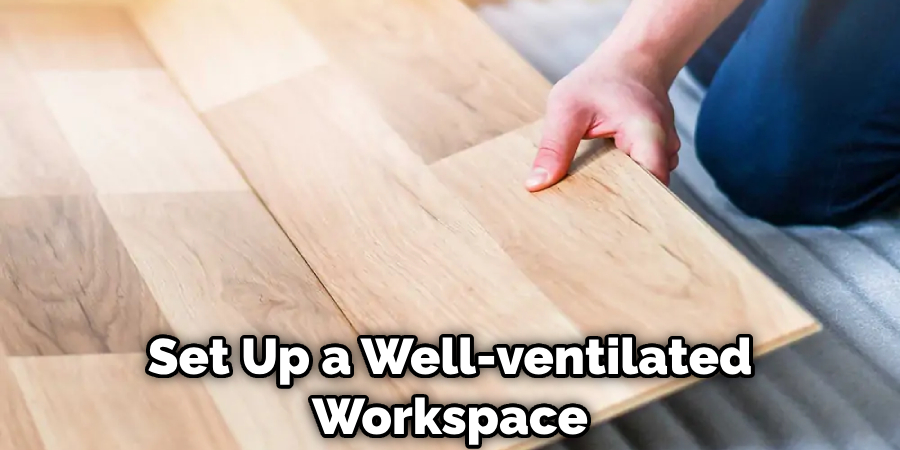
6 Ultimate Step-by-Step Guide for How to Remove Spray Adhesive From Wood
Now, let’s get down to business! Here’s a step-by-step guide to removing spray adhesive from wood surfaces:
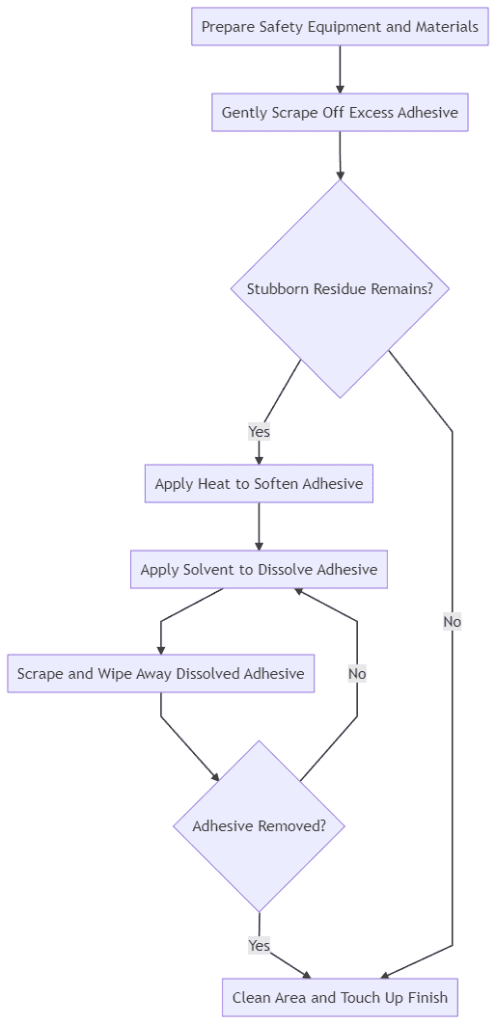
Step 1: Mechanical Removal
Start by gently scraping off as much of the adhesive residue as possible using a plastic putty knife or an old credit card. Work carefully to avoid damaging the wood surface.
Step 2: Heat Application (Optional)
For stubborn residues, you can apply heat using a hair dryer or a heat gun set to low. The heat will soften the adhesive, making it easier to scrape off. Exercise caution to prevent scorching or damaging the wood.
Step 3: Solvent Application
Moisten a clean rag or cotton ball with your chosen solvent (isopropyl alcohol, white vinegar, or a citrus-based cleaner). Gently rub the moistened material over the adhesive residue, allowing the solvent to penetrate and dissolve the adhesive.
Step 4: Scraping and Wiping
Once the adhesive has softened, use a plastic scraper or an old credit card to gently lift and remove the dissolved residue. Wipe away any remaining residue with a clean, dry cloth.
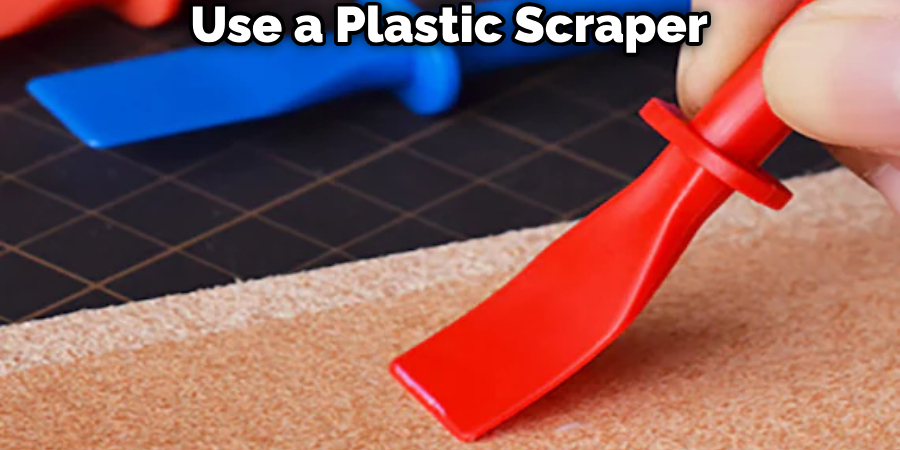
Step 5: Repeat as Necessary
For stubborn areas, repeat steps 3 and 4 until the adhesive is completely removed.
Step 6: Finish Touch-up (Optional)
If the removal process has left any discoloration or scratches on the wood surface, apply a thin coat of compatible wood finish to restore the original appearance.
Remember, patience is key! Removing spray adhesive can be a time-consuming process, but rushing can lead to damage. Work in small sections, and don’t hesitate to repeat the steps as needed.
You Can Check It Out to Glue Wood to Fiberglass.
Specialized Techniques: Tackling Unique Challenges
While the above steps cover the general approach, some situations may require specialized techniques:
- Different Wood Types: Adjust your solvent choice and application method based on the wood type (hardwood, softwood, painted, etc.) to avoid damage.
- Delicate Woodwork and Intricate Carvings: Use cotton swabs or soft-bristled brushes to apply solvents and gently scrub away residue in tight spaces or detailed areas.
- Old, Dried Adhesive Build-up: For stubborn, long-standing residue, you may need to apply more aggressive solvents or mechanical abrasion (light sanding) before proceeding with the standard removal steps.
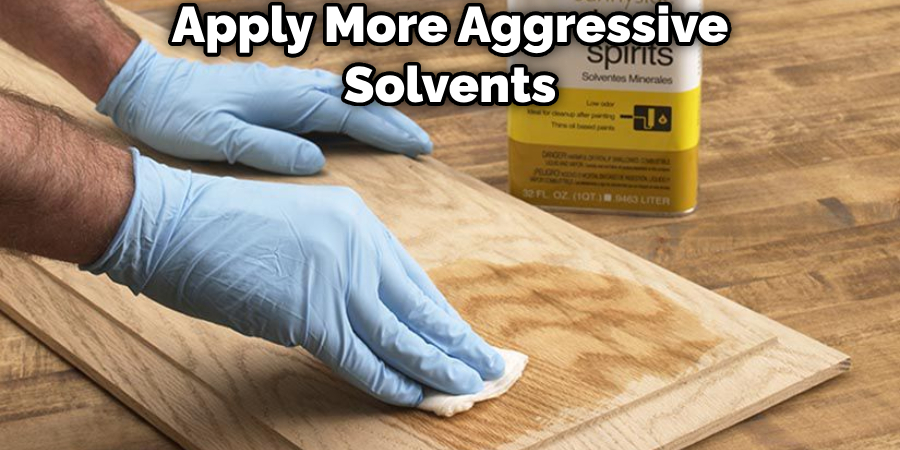
Homemade Solvent Alternatives: Cost-Effective and Eco-Friendly
While commercial adhesive removers are effective, they can be pricey and potentially harmful to the environment. Fortunately, you can create cost-effective, eco-friendly solvents right at home:
- Vinegar Solution: Mix equal parts white vinegar and water in a spray bottle. The vinegar’s acidity helps dissolve the adhesive.
- Oil-Based Removers: Cooking oils like vegetable or olive oil can effectively soften adhesive residues without harming the wood. Apply the oil, let it sit for a while, then gently scrub and wipe away the residue.
Always exercise caution when using homemade solvents, and test them first on an inconspicuous area.
You Can Check It Out to Remove Sticky Mouse Trap Glue From Skin.
Product Recommendations: Top Commercial Adhesive Removers
If you prefer the convenience of commercial products, here are some top-rated adhesive removers for wood:
- Goo Gone: A versatile, citrus-based remover that effectively dissolves adhesive residue without damaging wood finishes.
- Motsenbocker’s Lift Off: Specifically formulated for removing adhesives from wood, it’s gentle yet powerful.
- Unsmog Adhesive Remover: An eco-friendly option that uses plant-based ingredients to tackle stubborn residues.
When choosing a commercial remover, consider factors like ingredients, compatibility with your wood type, and user reviews.
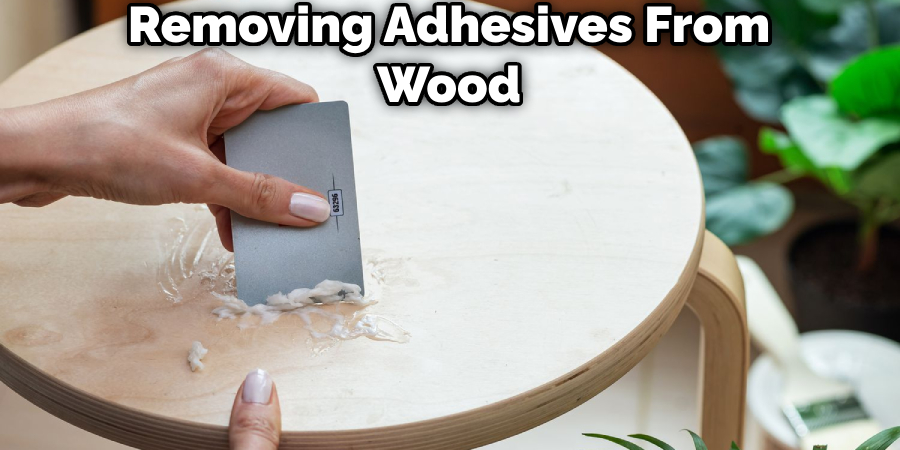
Prevention Tips: Avoiding Future Messes
While accidents can happen, taking preventive measures can minimize the need for adhesive removal in the future:
- Use Painter’s Tape or Drop Cloths: Protect surrounding areas by covering them with painter’s tape or drop cloths when using spray adhesives.
- Control Spray Amount and Direction: Be mindful of the spray pattern and amount of adhesive used to minimize overspray.
- Consider Repositionable/Temporary Adhesives: When feasible, opt for repositionable or temporary spray adhesives, as they’re often easier to remove.
You Can Check It Out to Glue Wood to Steel.
FAQs About How to Remove Spray Adhesive From Wood
How Do I Remove Spray Adhesive From Wood Without Damaging the Finish?
Start with gentle methods like scraping and applying heat. If you need to use solvents, test them first on an inconspicuous area and proceed with caution. Avoid harsh chemicals or abrasives that could damage the wood finish.
What’s the Best Way to Remove Old, Dried Spray Adhesive Residue?
For long-standing residue, you may need to use more aggressive solvents or light sanding before proceeding with the standard removal steps. Always test your chosen method first to avoid damaging the wood.
How Can I Safely Dispose of Used Solvents and Materials?
Check with your local waste management authorities for proper disposal guidelines. Many solvents and adhesive removers are considered hazardous waste and should be handled accordingly.
Conclusion: Tackle Spray Adhesive Residue Like a Pro
Removing spray adhesive from wood surfaces can be a daunting task, but with the right knowledge and techniques, you can tackle it like a pro. Remember, patience, proper preparation, and a methodical approach are key to achieving a pristine, adhesive-free finish.
By following this comprehensive guide, you’ll be equipped with step-by-step instructions, specialized techniques, homemade solvent alternatives, product recommendations, prevention tips, and answers to common concerns. So, grab your supplies, roll up your sleeves, and get ready to restore your woodwork to its former glory!
